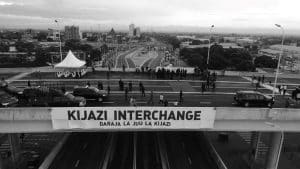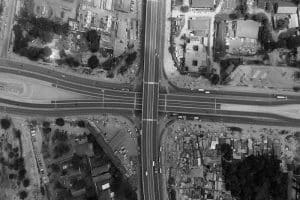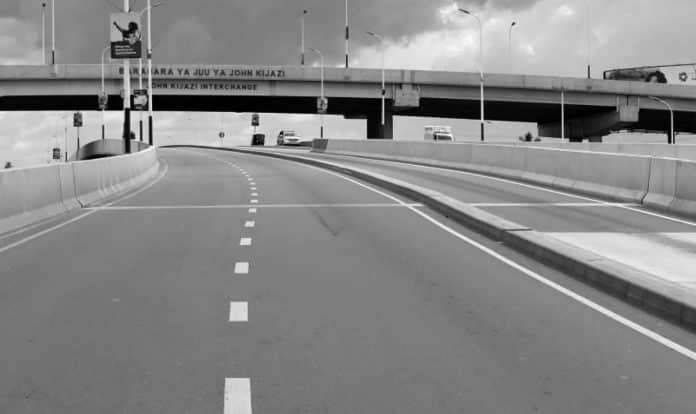Introduction to the Ubungo Interchange project
Dar es Salaam, Tanzania’s largest and most populous city, has long struggled with the challenges of urban congestion and gridlock. However, a transformative infrastructure project has emerged to alleviate these issues and improve the city’s transportation landscape. The Ubungo Interchange, a recently completed overpass and interchange system, is poised to revolutionize the way residents and commuters navigate the bustling streets of Dar es Salaam.
The need for a new interchange in Dar es Salaam

Prior to the construction of the Ubungo Interchange, the Ubungo area was a notorious bottleneck, with vehicles often facing lengthy delays and severe traffic jams. The intersection of major roads, including the Morogoro Road and the Kilwa Road, created a chokepoint that severely impacted the flow of traffic throughout the city. Commuters and businesses alike were burdened by the inefficiencies and lost productivity caused by this persistent congestion.
The design and features of the Ubungo Interchange
The Ubungo Interchange project was meticulously designed to address these longstanding issues. The new overpass and interchange system feature:
- A multi-level interchange with flyovers and underpasses to facilitate the seamless movement of traffic in all directions.
- Dedicated lanes for different vehicle types, including cars, buses, and trucks, to optimize traffic flow.
- Improved access roads and entry/exit points to enhance connectivity and reduce bottlenecks.
- Pedestrian walkways and overpasses to ensure the safety and convenience of non-motorized commuters.
- Intelligent traffic management systems, including signaling and monitoring technologies, to monitor and adapt to changing traffic patterns.
Impact on traffic flow in Dar es Salaam
The Ubungo Interchange has already had a significant impact on traffic flow in Dar es Salaam. By providing a more efficient and organized system for the movement of vehicles, the interchange has:
- Reduced travel times for commuters by an average of 30-40 minutes during peak hours.
- Alleviated congestion in the Ubungo area, allowing for smoother and faster movement of traffic.
- Improved access to key destinations, such as the city center, commercial hubs, and residential areas.
- Reduced the environmental impact of idling vehicles, leading to lower emissions and improved air quality.
Benefits for commuters and businesses
The Ubungo Interchange has not only improved the overall transportation experience but has also provided tangible benefits for commuters and businesses in Dar es Salaam:
Commuters:
- Reduced travel times and increased reliability in their daily commutes.
- Improved safety and comfort due to the better-organized traffic flow.
- Easier access to public transportation options, such as buses and taxis.
Businesses:
- Increased productivity and efficiency due to reduced employee commute times.
- Improved logistics and supply chain operations, with faster and more reliable deliveries.
- Enhanced accessibility to commercial centers, leading to increased customer traffic and sales.
Challenges faced during the construction of the interchange
The construction of the Ubungo Interchange was not without its challenges. The project faced:
- Land acquisition and resettlement: The project required the acquisition of land and the relocation of businesses and residents, which required extensive negotiations and coordination with local stakeholders.
- Traffic management during construction: Maintaining the flow of traffic during the construction phase was crucial to minimize disruptions to the city’s daily operations.
- Financing and budgetary constraints: The project required significant financial resources, and the government had to secure funding from various sources, including international development partners.
- Coordination with multiple stakeholders: The successful completion of the interchange involved the collaboration of various government agencies, contractors, and community representatives.
The role of the government and stakeholders in the project

The Ubungo Interchange project was a collaborative effort involving the Tanzanian government, local authorities, and various stakeholders. The government’s role was pivotal in:
- Providing the necessary legal and regulatory framework for the project.
- Securing funding and financial resources from both domestic and international sources.
- Coordinating the various agencies and stakeholders involved in the project’s planning, design, and implementation.
- Ensuring the effective communication and engagement with the local community to address their concerns and needs.
Other key stakeholders, such as urban planners, transportation experts, and community representatives, also played a crucial role in shaping the design and implementation of the interchange to meet the unique needs of Dar es Salaam.
Case studies of successful interchanges in other cities
The Ubungo Interchange is not the first of its kind, and the project team has drawn inspiration from successful interchange projects in other cities around the world. Some notable examples include:
- Spaghetti Junction, Birmingham, UK: This complex interchange in Birmingham, UK, is a prime example of how a well-designed interchange can improve traffic flow and connectivity in a densely populated urban area.
- Parcevall Interchange, Sydney, Australia: The Parcevall Interchange in Sydney has been widely praised for its innovative design and its ability to seamlessly integrate with the city’s existing transportation network.
- Puente Nuevo Bridge, Ronda, Spain: While not an interchange per se, the Puente Nuevo Bridge in Ronda, Spain, demonstrates how a strategic infrastructure project can transform the transportation landscape and enhance the overall urban experience.
These case studies have provided valuable insights and lessons that have been adapted and applied to the Ubungo Interchange project, ensuring that it meets international standards of excellence.
Future plans for improving transportation infrastructure in Dar es Salaam
The Ubungo Interchange is just the beginning of a larger effort to transform Dar es Salaam’s transportation infrastructure. The government and local authorities have outlined ambitious plans to further enhance the city’s mobility and connectivity, including:
- Expanding the network of interchanges and overpasses to address other congestion hotspots.
- Investing in the development of a modern, efficient public transportation system, such as a bus rapid transit (BRT) network.
- Improving the city’s road network, including the construction of new highways and the widening of existing roads.
- Promoting the use of non-motorized transportation options, such as cycling and walking, through the creation of dedicated lanes and infrastructure.
- Integrating intelligent transportation systems (ITS) to optimize traffic management and provide real-time information to commuters.
These future plans, combined with the success of the Ubungo Interchange, are poised to revolutionize the way Dar es Salaam’s residents and businesses navigate the city, ultimately enhancing the overall quality of life and economic opportunities.
Conclusion: The positive transformation brought by the Ubungo Interchange
The Ubungo Interchange has been a game-changer for Dar es Salaam, transforming the city’s transportation landscape and setting the stage for a more efficient, sustainable, and livable urban environment. By addressing the longstanding issues of congestion and gridlock, the interchange has not only improved the daily commute for residents but has also unlocked new economic opportunities and enhanced the overall quality of life in the city.
As Dar es Salaam continues to grow and evolve, the Ubungo Interchange stands as a shining example of how strategic infrastructure investments can catalyze positive change and pave the way for a more prosperous and connected future. The success of this project has inspired the government and local authorities to pursue even bolder plans for improving the city’s transportation network, ensuring that Dar es Salaam remains at the forefront of urban development in Tanzania and the broader East African region.
For more information on infrastructure click here!

































